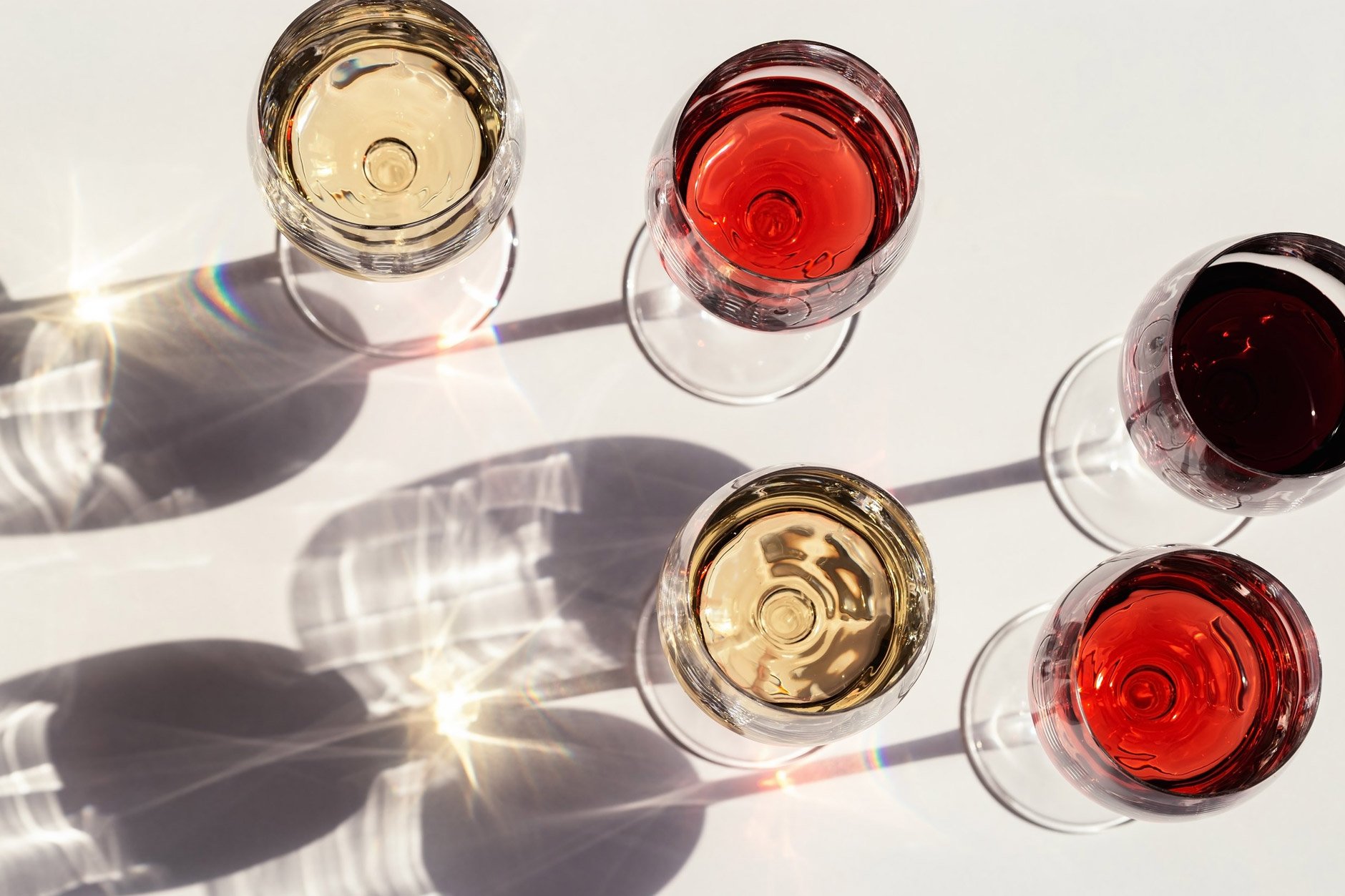Colour is the first thing we notice when we pour wine into a glass. However, while distinguishing a wine by whether it is red, white or rosé is the primary classification, there lies a whole other world (in every sense) behind it to explore: it is too easy to limit oneself to defining a wine on the basis of this first distinction ...
What does the colour of wine depend on and what are the different chromatic nuances of the wine?
Colour: the importance of polyphenols
The colour of wine is mainly determined by the polyphenolic substances present in the skin of the grapes used to produce it. Polyphenolic substances include flavones, anthocyanins, and leukoanthocyanins, among others. Depending on their concentration in the grape skins, the time that the substances remain in contact with the must, and other winemaking processes, wine can take on a more or less charged, bright colour.
However, it is not only the colouring substances in the grape skins that determine the colour of a wine. Another factor to consider is the type of vine the grapes came from: vines may be more or less predisposed to release dyes present into the grapes. For example, wines that are produced from vines such as Syrah and Cabernet Sauvignon have a more intense colour than Pinot Noir or Sangiovese wines.
Another important variable is the maceration time, or how long the grape skins remain in contact with the must: for red wines, this can be as long as several weeks; for a rosé, it is limited to a few hours. For white wines, this does happen at all.
Finally, it is necessary to take into account certain production techniques which can influence the colour of wine. For example, the number of times the must was mixed from the lower part to the upper part of the fermentation tank, the amount of sulfur dioxide used, and the use of barriques and wooden containers for ageing. These tend to stabilize the colour of red wines and give golden nuances to white wines. The time factor should not be underestimated, since the evolution of the wine inevitably also brings a variation in the shade: an intense ruby red wine will turn a garnet colour due to oxidation processes over the years.
Red, white and rosé. But that's just the beginning...
Wines are principally distinguished on the basis of their colour: red, white and rosé. But, for more detailed classification, it is possible to distinguish different nuances for each macro-category.
Red wines come in shades of:
- Purple-red, typical of young, fresh, drinkable wines, such as Lambrusco;
- Ruby red, characteristic of most wines;
- Garnet red, for wines that have undergone ageing in wood or which derive from long periods of ageing;
- Orange-red, typical of mature wines. Sometimes this colour is a sign of the possible alteration of the organoleptic characteristics due to the evolutionary state of the wine.
White wines have a range of shades ranging from greenish to dark and golden tones:
- Greenish-yellow, for young white wines with a strong acid vein, Riesling is the best example of this;
- Straw yellow, typical of fairly young wines, with a good balance between hardness and softness, like a Chardonnay;
- Golden yellow, characteristic of those wines obtained from overripe grapes which have sometimes also undergone a short period of time in wood;
- Amber yellow, the colour of liqueur wines, where the level of acidity is almost zero.
Rosé wines are obtained from black grapes so their colour depends mostly on the period of maceration with the grape skins. These wines can then be further classified as follows:
- Soft pink, the sign of a short maceration period lasting a few hours, like the Loris Rosé Wine;
- Cherry rose, the grape skins remained in contact with the must for a longer period;
- Claret pink is the most intense pink and is the result of a greater passage of colouring substances from the grape skins to the must.
What about orange wines?
This term defines macerated white wines: they are the result of an ancient peasant tradition, which has only been rediscovered in recent years. The particularly intense colour of orange wines comes from more prolonged contact with the grape skins, giving the wine not only colouring substances but also unique and very particular notes and aromas. These wines should be served at a temperature of 15 °, perhaps opening the bottle a few minutes before serving.
As for pairings, the wines marry with ethnic and oriental cuisine, where spices are the masters.
 Free Delivery from 69£
Free Delivery from 69£
